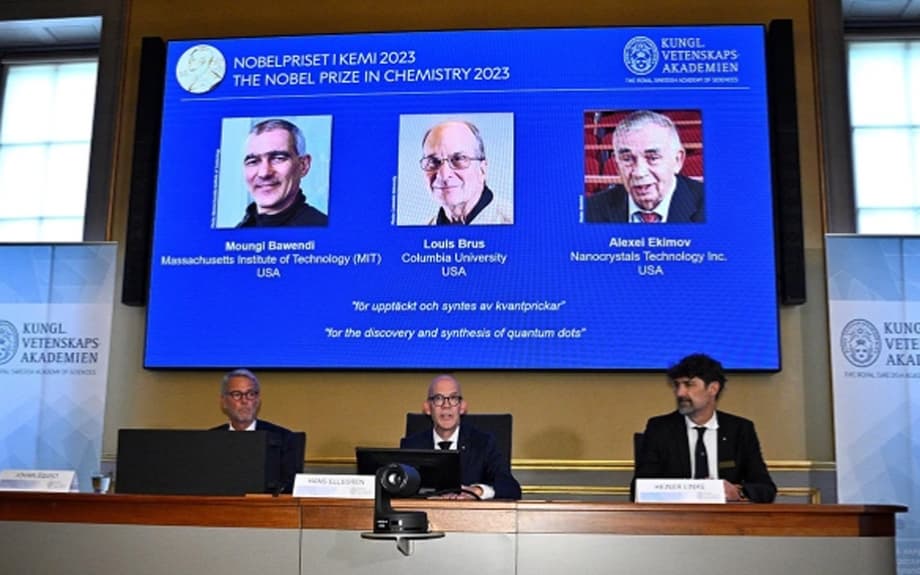The 2023 Nobel Prize in Chemistry has been awarded to Alexei Ekimov, a scientist of Russian origin. He was awarded along with his colleagues from the United States, Louis Bruce and Mungi Bawendi, for the discovery, study, and synthesis of quantum dots.

Ekimov began his scientific research in the USSR, and after the collapse of the USSR, he continued his work in Russia. However, in 1999, he moved to the United States and studied the features of quantum dots there.
Quantum dots
Quantum dots are semiconductor nanoparticles even smaller than an atom. They can be created artificially. They do not have a nucleus, and the number of electrons can be changed by external influence through electromagnetic fields or changing the conditions of their growth. When energy is emitted, the electron moves to a lower energy level. Energy is emitted in the form of light of a certain wavelength. It turns out that when the size of the quantum dot changes, so does the energy of the electron, and the color of the light it emits.
Ekimov was the first scientist in the world who, in 1981, at the Soviet State Optical Institute named after Vavilov in Leningrad, was able to isolate quantum dots and began to study their effects.
The scientist proved that they can influence the color change of glass. Later in the United States, Louis Bruce was the first in the world to prove the quantum effects of particles freely floating in a liquid, and Mungi Bawendi was the first in the world to bring the chemical production of quantum dots to an ideal state.
Where quantum dots are needed
Quantum dots work in displays of televisions, laptops and other devices, in modern LED lamps.
Researchers believe that in the future they could contribute to flexible electronics, tiny sensors, thinner solar cells and encrypted quantum communication. Therefore, we have only just begun to explore the potential of these tiny particles.
They are also used in medicine - with the help of quantum dots, for example, tumor tissues are marked for surgeons during operations.
Now on home

The service contains data on 45,000 fraudulent sites


Modernized engines may equip the Lada Azimut crossover

The price is 132 billion 265.8 million rubles

The manufacturer plans to strengthen its lineup of light commercial vehicles

The production of carbon fiber was organized in the shortest possible time

Electric vans will speed up the repair of urban transport infrastructure

Countries are working to synchronize regulations in the field of AI

The service's average daily audience is 55 million people

Stable Isomaterial Based on Metakaolin Has a Density Below 300 kg/m³

Re-identification quality improved twofold with new DynaMix method

Russians will be able to find out about debts online